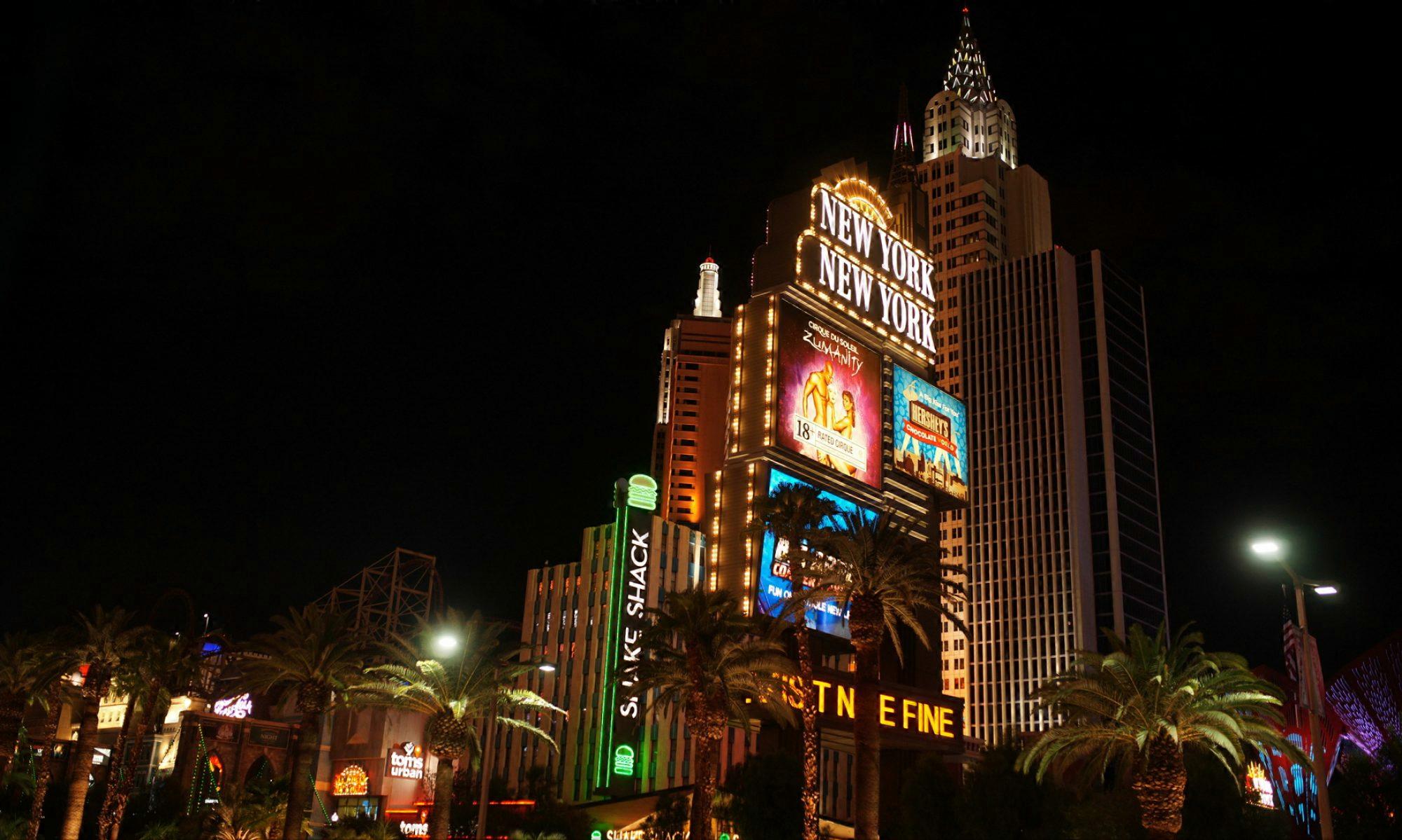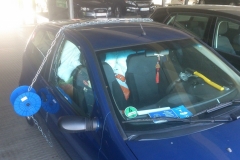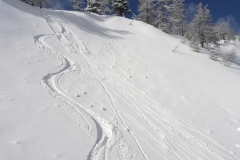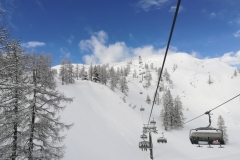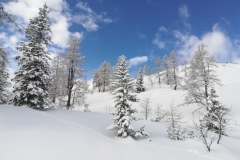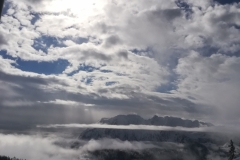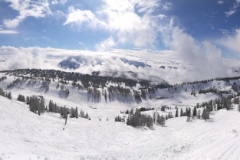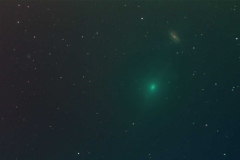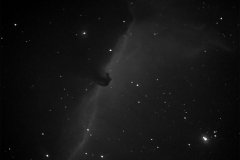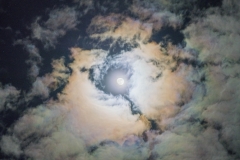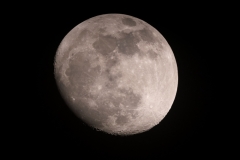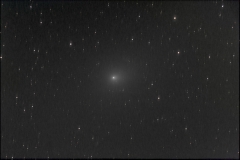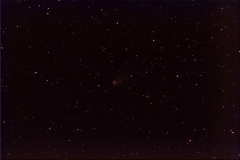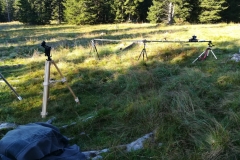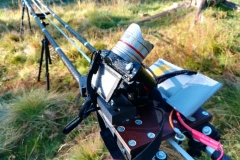A few days past, I came across this jewel. I think the owner felt very insecure about the car being picked (in a security camera observed parking garage)…
What a day at Tauplitz ski resort
Today I had the chance to go to Tauplitz ski resort. The weather forecast predicted for a quite instable day, including rain. The morning rain at Tauplitz was actually snow fall creating pristine conditions . Further more, the clouds opened up and did give way for a wonderful day up in the mountains. In the surrounding areas and from the late afternoon on (on the way home) there was still rain and a lot of cloud coverage. But that did not matter at all.
This is central Austria in best winter / skiing conditions:
My DIY Sky Quality Meter – first test
A few times in the past I have seen charts of the dark sky quality for astronomical use. Especially during a visit of the University astronomy department I had the chance to talk with one of the facilities operators. This made me curious about how they quantify the night sky quality.
Upon further research I found the widely used Sky Quality Meter by Unihedron. It is a small box measuring the sky brightness by means of a light sensor with corresponding frequency output. When I could find a distributor selling these sensors for a good price, I was up to building my own one.
My concept was to use a arduino style micro controller and build a sky quality meter together with weather data (temperature, pressure, humidity) recording device. The device should save every 10-30 seconds the data collected. And it should last for at least one whole night running on a small(er) battery like AA or 18650 lithium type.
The hardware part was quite easy to accomplish. I simply had to connect a couple of wires from the micro controller to the sensors and other components. The harder part was to create a proper software, fulfilling all my needs. I had to find a way to
1) cope with the frequency range of 0.01Hz to 1MHz
2) fit all the code within the small memory
3) calculate sky quality and calibrate device to a reference device
Luckily, apart from a reasonably well described device on the Unihedron web-site, I could borrow one Sky Quality Meter from a fellow astronomy club member. So I had a reference device to compare and calibrate my device.
Here is the test setup. The readings are already very close to the original device!
Comet C/2018 Y1 Iwamoto with NGC 2903 Galaxy from the city
It is always frustrating to see good weather pass without the opportunity to do some photography – especially astro-photography. So even if time does not permit a trip to the darker spots in reasonable distance from my home, it is worth a try to setup the telescope on the balcony.
This time, clouds cleared throughout the day (and happend to reappear before midnight). So I had to take the chance to spot Comet C/2018 Y1 Iwamoto. Unfortunately, I was unable to spot the comet through the eyepiece. The sky was far too bright (approximately 18mpss) watching straight over the citys light dome and having a 60% illuminated moon shining bright. Fortunately, through the camera I could make out a smudge, being brighter than the sky.
Processing the 180s subs with 1 hour total exposure time, I could achieve this result (compare to the unprocessed image!):
Image is a composite of 2 stacks (one aligned on stars, second aligned on comet). The comet moved more than 1.5 degrees during the 1 hour capturing time!
Above the comet: NGC 2903 (mag 9 galaxy)
At left: NGC 2916 (mag 12.1 galaxy)
Imaging setup: 800mm f/4.0 Newton, Sony A6000 full spectrum modified, UV/IR block filter, UHC filter, coma corrector (at wrong distance).
20x 180s @ ISO800, darks and flats
Conditions: +2°C, 60% moon, 18-18.5mpss sky in suburban location (with ample street light)
Horsehead Nebula in H-alpha across the city
I had a bit of time to experiment with an H-alpha filter at home. Conditions are limiting astro-imaging as my balcony faces south. Living in the northern outskirts of a city, all the sky visible is significantly affected by city lights. This night, the sky was somewhat OK, reaching up to 18.7 to 19.5 mag/arcsec².
Using narrow band filters, like an H-alpha filter, the majority of the city lights may be cut away. This image (not perfectly focussed) shows, what is possible. It is a result of 12x240s, captured at ISO800 with my modified Sony A6000…
Sunset in Graz, Austria
Comets during full moon
After 2 weeks of thick cloud coverage, I had the chance to spend the evening at the observatory. Actually I jumped in to hold the guided tour this evening…
As there was almost full moon and some cloud coverage (which got steadily thinner) I played a bit around with the setup. I thought – deep sky at full moon is a waste of time. But how about the comets 46/P Wirtanen and 38/P Stephan-Oterma? How brigth are the comets still? Would they shine through the moon lit sky?
Well… I could not make out Stephen-Oterma. But Wirtanen was barely (in)visible. I had some other tasks to do, so I attached the camera to the scope and let it run to see, what may be gathered under these conditions.
Despite of the Moon and the corona of Moon, a little bit of the comets was still possible to process from 90 minutes of total exposure time each:
HDR sunset at Horseshoe Bend
The Horseshoe Bend is an incredible place to see a sunset. When you arrive at the right time, a front row “seat” may still be available. Though nowadays literally crowds are streaming to the canyon rim to see the Horseshoe Bend. But be aware of the steep drop right next to you! The 300m straight down are nothing for the faint at heart. And you sure wont want to drop anything as it would just be lost forever.
Now if you are careful and ensure that spectators wont ruin your shots, you may set up the camera quite close to the edge. I took my turn and created a HDR sequence (5 photos per frame) of the sun descending behind the horizon:
Nighttime slider hyperlapse at Liptovsky Mara, Slovakia
In mid may I was invited to a wedding in Slovakia. All the day I was busy shooting the happy couple as well as the guests. When night fell upon the lake right beside the location, I set up my slider with 4 meters of rails and let it run for almost 2 hours. This time I added a rotating device for panning across the scenery. Unfortunately the unit stopped after 1 hour for no good. So the resulting video has a somewhat strange change of movement in the middle.
Perseid meteor night – hyperlapse
In the night of the 2018 Perseid meteor shower maximum I was out to the mountains for a fantastic view of the stars. I also setup my slider to capture the milkyway moving across the sky… Well I did not expect that amount of humidity. The camera got completely covered in dew and I forgot to bring my dew heater. So the video only lasts for 3 hours time, until all was soaking wet…
